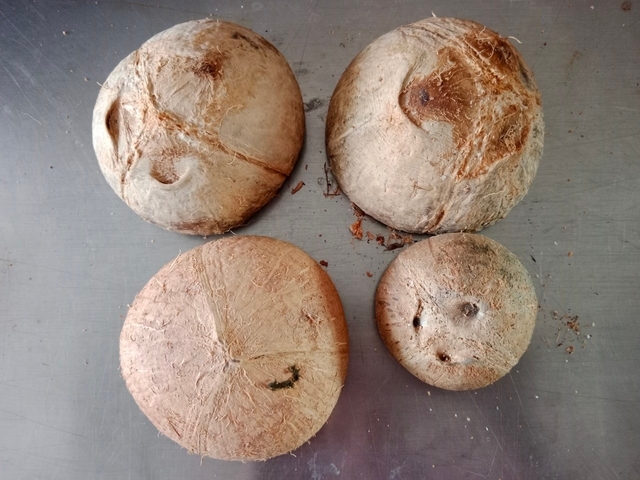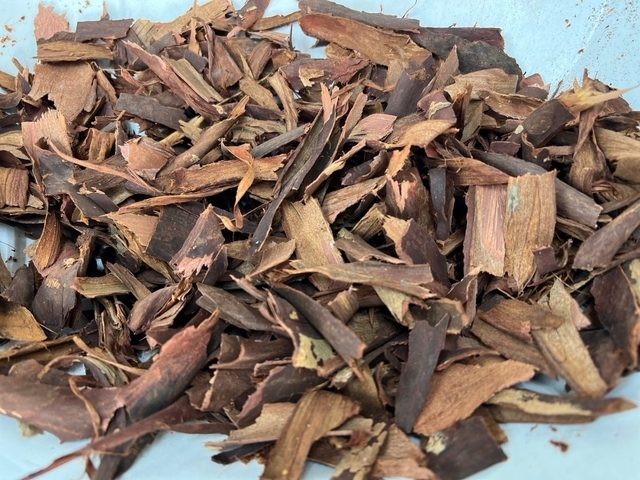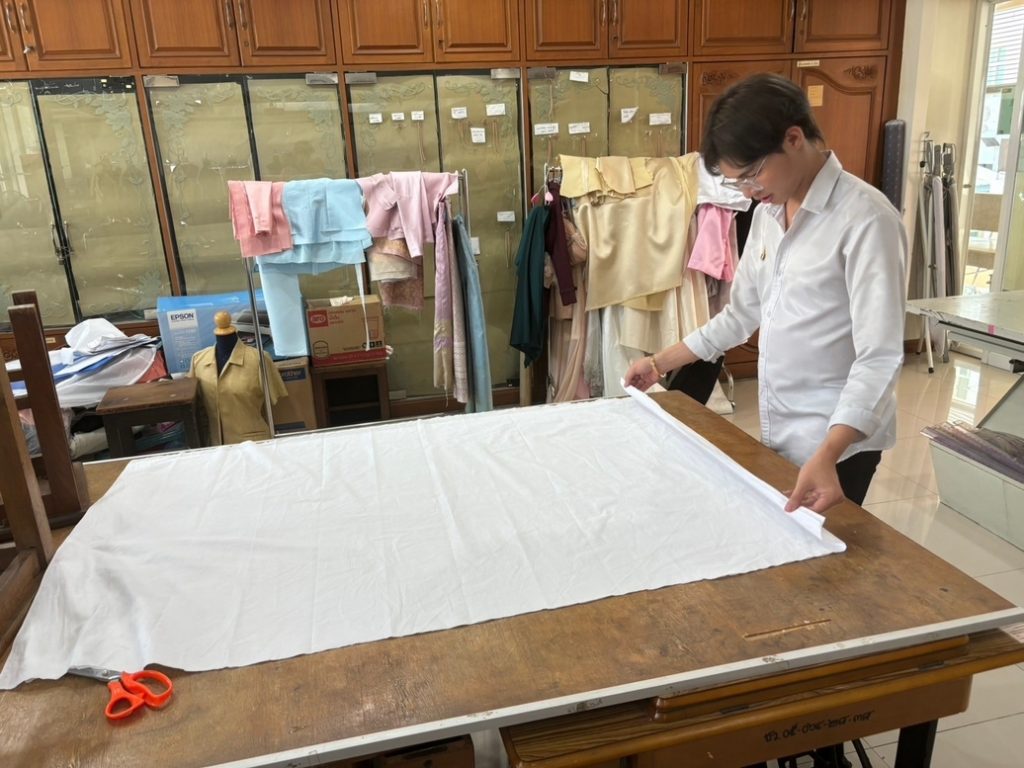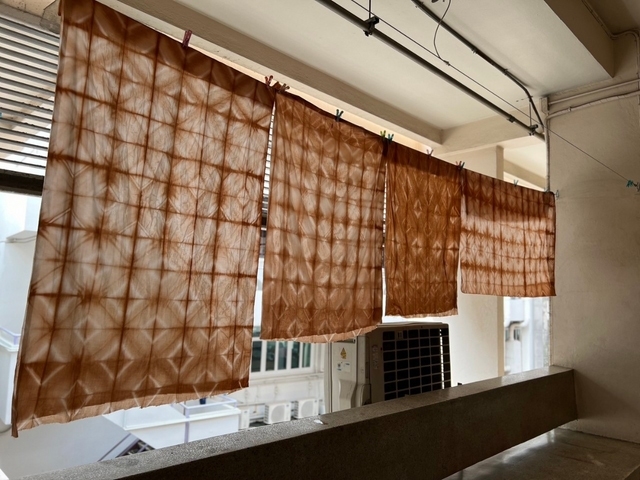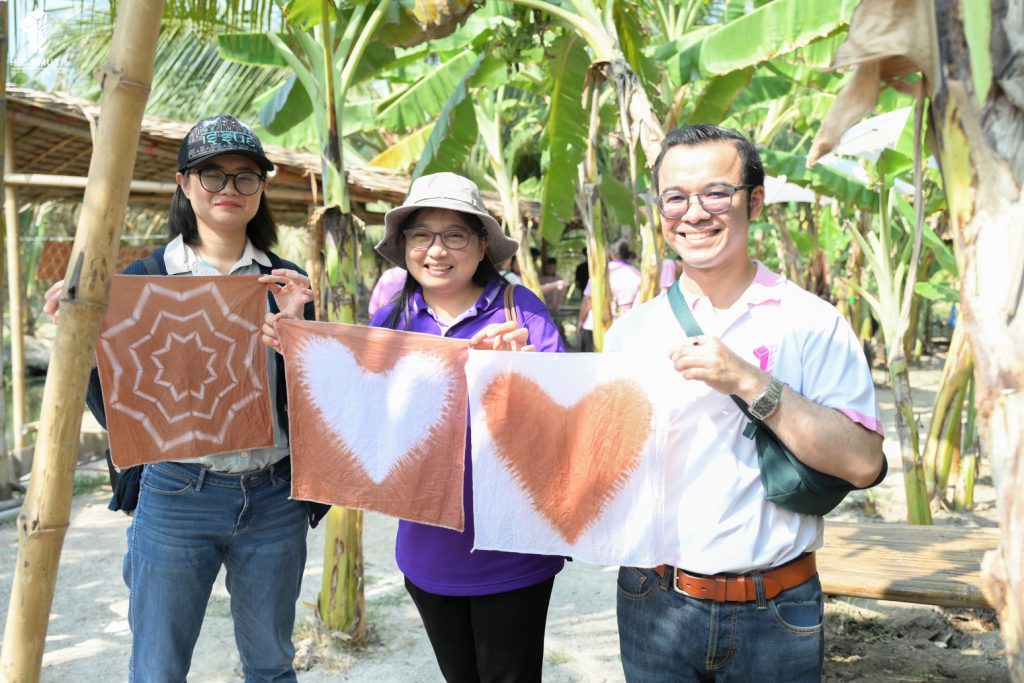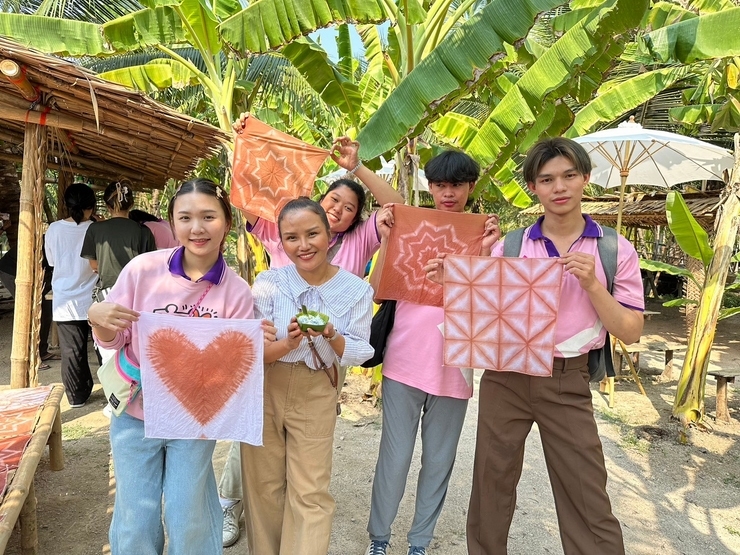
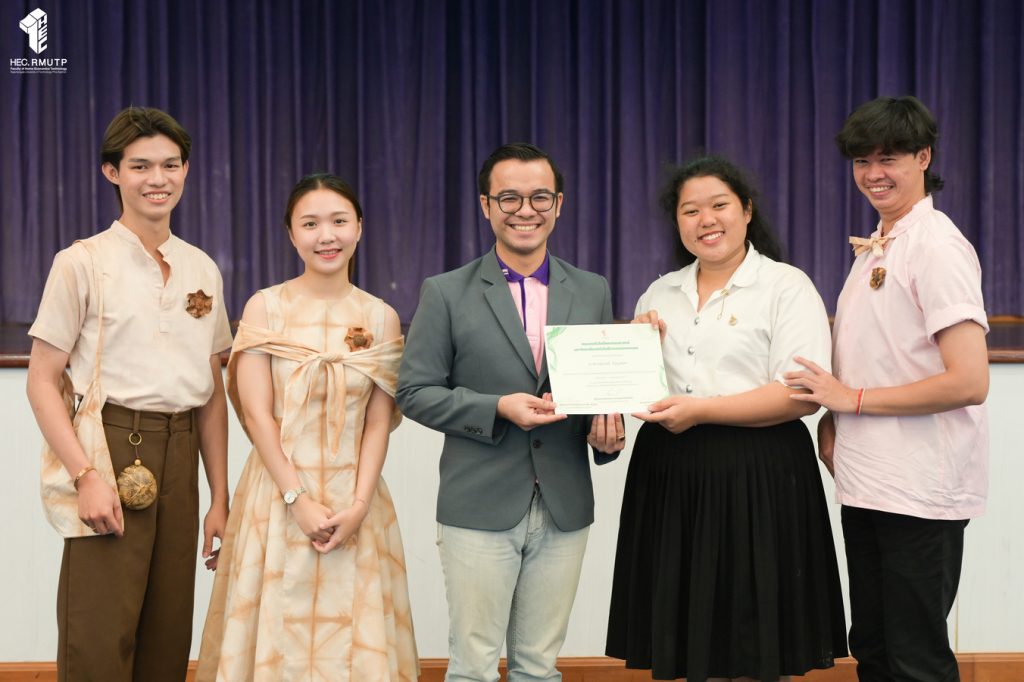
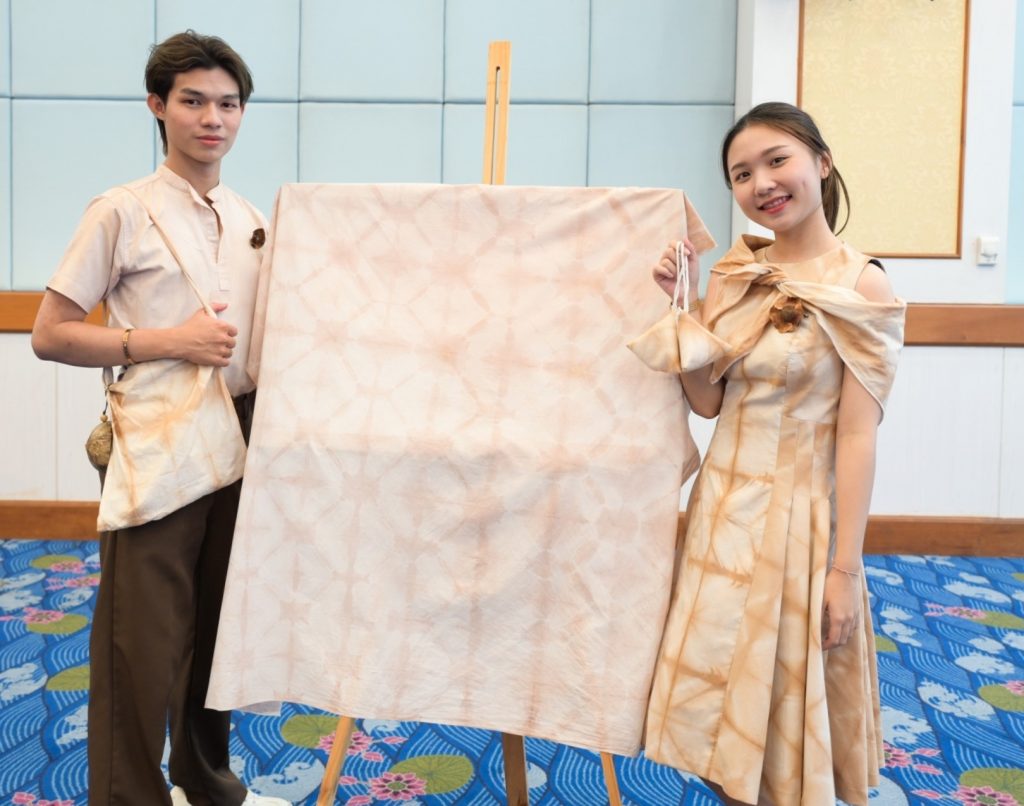
Dyeing fabric is an ancient Thai local wisdom by taking natural raw materials from plants, animals, and various minerals to dye thread for producing more beautiful colors to be used in weaving. Dyeing fabric with natural materials is not toxic to people, animals, and the environment. This process was considered as a cultural heritage and becomes to be an identity of local people in various area which transfers techniques to younger generation. Although textile dyeing technology may change with the times, natural dyeing remains a simple method as we can see in Ban Lom Toen Community or Kung Lom Toen in Samut Songkhram province, which is a conservation tourism destination. Most of the villagers are producing coconut sugar and fishing. Additionally, there is a community enterprise called Ban Rim Khlong Homestay, which is a place where tourists can experience of local livelihood through various activities which are coconut hat leaf weaving, cooking of coconut ball, coconut sugar , salt eggs, making tie-dye fabric, and making keychains from coconut husk.

Mr. Parada Paksathong said the testing result of color durability of natural color extract from coconut shell mixing with granatum shell, the most color was fell off only in the first time washing because it was not absorbed in the thread, but next time the color will not fall out and rarely color changes. This can be concluded that natural dye color from coconut shell and granatum shell can be made into a very good natural fabric dye.
Apart from teaching of dyeing process for interested villagers, lecturers from RMUTP also teaching of natural dyed fabric sewing into various types of apparels such as hair turban, headband, small wallet which generates income to local community, and become a souvenir of the Ban Rim Klong Homestay Community as well. ‘the main idea is we want to change garbage that everyone disregarded transform into new product and making high profit and incomes to local community. We have to thank for Plant Genetic Conservation Project Under the Royal Initiation, Student Affairs Division, Faculty of Home Economics Technology for solution suggestions of natural tie-dye development to be a quality product to locals.
Ms. Manlika Chongjit, Project advisor and lecturer of fashion merchandising technology said that product integration and plant utilization from Plant Genetic Conservation Project Under the Royal Initiation 2024 is an integrative study with their subjects with the aim of transferring their knowledge for study, research, and gathering all database of herb develop into consumable products, and raise the awareness of local resources usage and self-learning of natural dye processing which transferrable to future generations, and also offers an opportunity for students to practice and cherish their conservative awareness for sustainable alternative production.
